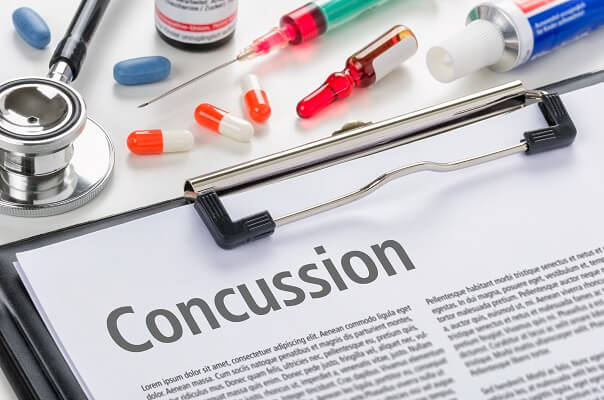
Free Consultation(203) 447-0000

Free Consultation(203) 447-0000

Children playing sports, especially sports with tackling, checking, and strikes, are the victims of concussions. Most children continue to play that sport and will suffer repeated head trauma as a result.
Concussions are a common sports injury, but they should no longer be something parents, players, and coaches brush off. Instead, they must be taken seriously. Because anytime the brain suffers trauma, it is a serious and potentially life-altering threat.
Concussions frequently happen in contact sports, but you may not realize how likely it is that your child could suffer from one, too.
Concussions were once thought of as a trivial injury, but recent studies have shown that even a minor concussion can lead to negative effects later for a growing athlete – especially if they have repeated “minor” injuries. These can affect their memory, reaction, and emotional well-being.
It is vital that players, coaches, and anyone involved in youth league sports understand the risks, signs, and know how to treat these concussions.
The best way to diagnose and monitor someone with a TBI is to know the symptoms of brain trauma. Symptoms of a concussion may start immediately after the accident, while other times they may take hours to days to fully develop. These include:
The symptoms may come and go as the brain heals as well; therefore, these may stay a few days or affect a player for weeks while their brain heals.
Never should an athlete return to the field until all symptoms are gone. A child’s physician should be involved and brought in the moment these symptoms appear.
Most importantly, the age-old thought that a child must lose consciousness to suffer a concussion is not true. Instead, a person can suffer a TBI without losing consciousness at all.
Concussions themselves are invisible. You cannot see the damage on the outside of the brain, but inside, the trauma is real. These strikes disrupt the brain’s regular activity, which is serious regardless of how violent the accident was initially.
Also, while the list of symptoms above are a general idea of what an athlete may experience, it is not complete. Some may never develop blurred vision and only complain of a minor headache. Other times, the symptoms are so severe that it disrupts a person’s everyday life.
Concussions affect a person, not only physically, but emotionally, cognitively, and even while they sleep.
Knowing the symptoms is critical so that you can identify if your child or players have injuries that require medical attention.
Coaches, immediately after a traumatic injury, should look for the following in their athletes to assess whether a TBI might have occurred:
If even one of these is apparent, then the coach should remove the player from the field and have them assessed by a medical doctor. Furthermore, they should not return to the field until they have been medically cleared.
Players should never go back out onto the field or into the game if they are suffering from a TBI. Doing so puts them at high risk for second impact syndrome, which can be catastrophic, especially if a player is under 21 years old.
This syndrome will happen if a second strike to the head occurs before the initial concussion has healed. The second impact does not need to be as violent as the first, but the damage will be much worse.
If second impact syndrome were to occur, the athlete might have brain swelling, which can result in brain death, paralysis, or physical death.
No child should be back on the field immediately after a TBI. Instead, they should take the recommended recovery time, follow up with a physician, and only return when they have been fully cleared.
Likewise, allowing a player to continue playing after brain trauma can increase their risk for CTE. CTE is a degenerative brain disorder seen in athletes with repeated head trauma during their sports careers, such as football players. This disease has no cure, and it can dramatically shorten a person’s life while altering their quality of life in later years.
Whether you are the parent of an injured athlete or a coach monitoring your player’s recovery status, you want to make sure they recover correctly.
Head trauma is head trauma.
Even if there is no brain bleed or anything severe on the MRI, that doesn’t mean the player should return to the field. MRIs do not pick up minor concussions. But if that concussion is present and the player goes out to play again, they are at risk.
Symptoms with a concussion can suddenly flood in, trickle in, or come and go throughout recovery. Often, players will feel better in a few days and assume that they are cured. However, they will notice that the symptoms recur here and there for up to a month, post-injury.
A person might not even realize that they have a symptom, because their brain is injured and has no capacity for identifying a symptom.
Any symptom that appears following head trauma should be reported; never should a symptom be left out. If your child complains one day of noises too loud but doesn’t seem to complain as much the next day, you should still tell his or her physician.
Likewise, no one should try to minimize symptoms so that the athlete can return to the field. If the child still has recurrent headaches or bouts of blurred vision, then they are not medically ready to return.
Concussions require physical rest in the beginning along with longer brain rest. Sleep, contrary to belief, is critical for recovery. The age-old saying of keeping a person awake was disproved, and now experts believe that sleep is the brain’s most valuable asset when it comes to recovering from traumatic brain injuries.
Let your child sleep, but monitor them. If it is difficult to wake them up or they are extremely drowsy, contact your physician and let them know, right away.
Your doctor will tell you how much physical rest you need and instruct you on brain rest. Most likely, you will need to avoid screens or anything taxing on the brain – something that requires the brain to use multiple systems at once. The more you rest the brain, the faster it will recover.
Once the athlete is completely free of symptoms and their physician has cleared them medically, then they should participate in sports but only at a gradual progression.
Progression means that the child will slowly re-enter the sport (such as exercising with the team) but not engage in any contact portion of the sport. Be on the lookout for any concussion signs returning, such as a headache after working out. If symptoms are present after slowly re-entering, the child needs to be removed for a few more weeks to recover before trying again.
Progression is critical. It allows parents and coaches to assess whether the child can handle re-entry and if the brain is truly ready.
Each stage should take a minimum of 24 hours – if not up to 72 hours. The athlete should take his or her time entering the sport. As long as they remain asymptomatic, then they can progress further until they return to full play.
If your child was seriously injured in his or her sport or you feel that their injury was ignored and not appropriately treated by coaching or league staff, you may be entitled to compensation. A TBI is serious – regardless of how minor the accident might have looked.
To explore your options, you need to speak with a team of attorneys who handle brain injury cases.
Contact Berkowitz Hanna today to schedule a no-obligation case evaluation.
Berkowitz Hanna
